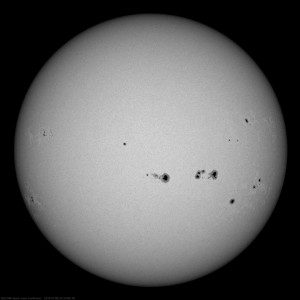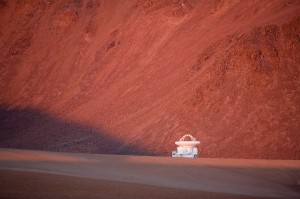Looking at some of the photos returned by NASA’s Solar Dynamics Observatory (SDO), you’d think contemporary solar observing had little in common with what was being done at Kodaikanal c. 1900-1910. But in addition to the dramatic images of solar loops like the one shown above, SDO also sends back sunspot records that closely resemble the photos and charts produced by C. Michie Smith, John Evershed, and company.
According to SDO/NASA:
“The Sun sported a whole slew of substantial sunspots over the past 11 days (July 1-10, 2014). This movie and still show the Sun in filtered white light speckled with more and larger sunspots than we have seen in quite some time. Sunspots are darker, cooler regions on the Sun created by intense magnetic fields poking through the surface. The Sun may have passed its peak level of activity, but it will still be producing many more sunspots and solar storms during the rest of this solar cycle. The still image was taken on July 8 at 22:24 UT.”
Looks familiar!
Visit the NASA/SDO gallery to see more images of solar activity. Like the two above images, most are stills excerpted from videos. Click through each image to reach the links to .mov and .mp4 files.


